- Details
By Ted Pilgrim
Traditions Media
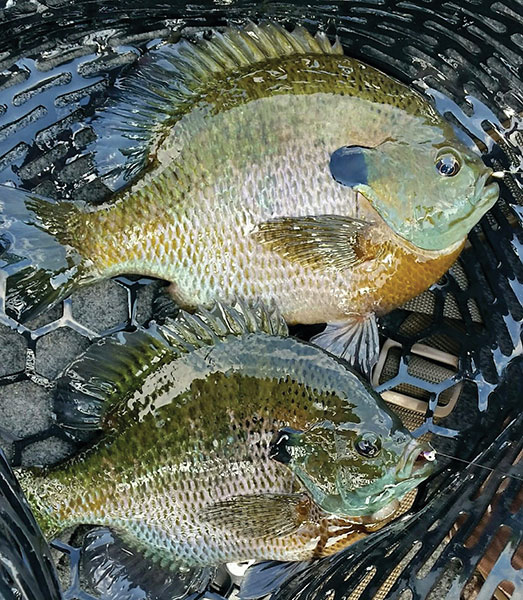 The Tungsten Advantage for Summer and Autumn Panfish
The Tungsten Advantage for Summer and Autumn Panfish
Fascinating factoid about panfish: When the spawning season a distant memory, a lot of folks manage to mostly, well, forget these fish exist.
It seems in some ways, crappies, sunfish and perch are the groundhogs of the fishing world—they show themselves in spring, but folks sort of neglect them after that. That is perplexing when you consider that for the balance of the calendar year—summer and fall, in particular— most of the biggest crappies, sunfish and perch simply take their game to deeper water. And it’s deep they remain, often from July through winter, and feisty and catchable as ever.
Thankfully, many of the best deep locations frequented by panfish aren’t more than a short boat-ride removed from their springtime hangouts. Black crappies suspend off the end of a weed point or a creek channel in 15 to 25 feet of water; big ‘gills on an isolated rock-pile, surrounded by 30 to 40 foot depths; or yellow perch scattered 20-feet down atop a sweeping mud flat.
- Details
By Louie Stout
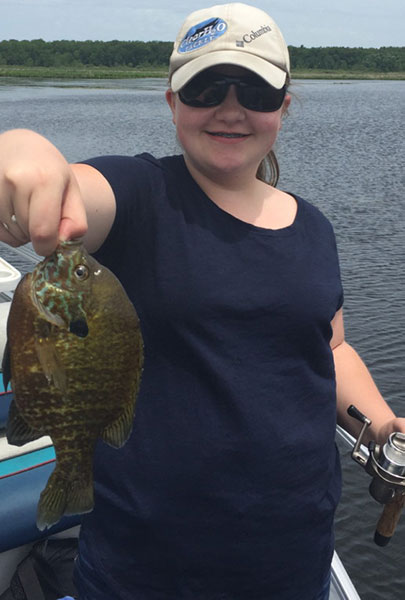 Tricks for Spawning Bluegills
Tricks for Spawning Bluegills
Darrin Schaap runs one of the most sophisticated tackle shops in Michiana.
He caters to hard-corps bass fishermen, Lake Michigan trollers, river walleye fishermen and steelhead anglers as well as the panfish crowd.
He does all of that with vigor, but nothing gets him more excited than bluegill fishing.
“If time allowed, he could do it every day,” he said with a huge grin.
So it’s no surprise that Schaap has spent quite a few days the past week fishing with his kids on lakes around his Edwardsburg home.
After all, the gills are beginning to spawn.
Now is the most popular time for bluegill fishermen because it can be easy fishing. Once the panfish lock down on dished-out beds they fan out with their tails, they are easy to spot. Sandy shorelines, around lily pads, behind scattered weeds and around docks are good places to look. They prefer to nest in areas relatively close to deeper water that provides them a safe escape route if bad weather rolls in.
Some will spawn fairly deep, depending upon the lake, but most of the deep spawning activity occurs later in the summer.
- Details
By Chip Leer
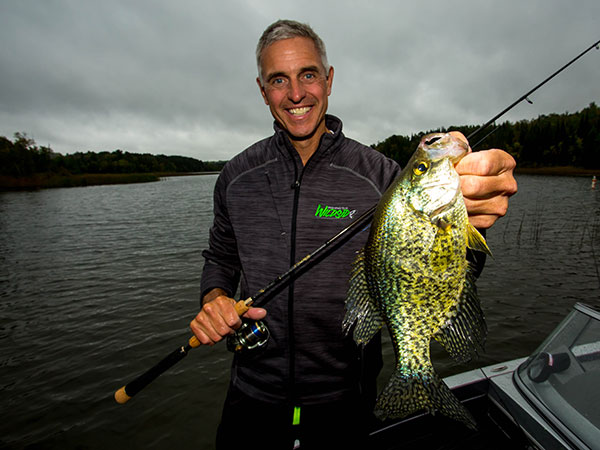 Try Tiny Jigs for Fall Panfish
Try Tiny Jigs for Fall Panfish
When fall crappies and sunfish roam deep weed edges and structural sweet spots such as points and bars, fishermen adept at precisely positioning subtle presentations in front of fish’s noses can enjoy banner catches other anglers miss.
One of the best ways to reap the autumn harvest—and indeed, catch panfish anytime they favor deep habitat—is working a small jig on a modified three-way rig similar to those used by walleye anglers.
It’s a simple yet deadly setup. You’ll want to keep the jig in or close to the sonar cone, so leave the long rods in the locker. I favor a 6’-3” medium-light spinning rod such as 13 Fishing’s Muse Gold (http://www.13fishing.com/muse-gold/), strung with 6-pound Bionic Braid (https://shop.northlandtackle.com/line/bionic-walleye-braid/).
Tie a three-way swivel to the end of the mainline, then add a relatively long dropper (say, 24 inches) of 4-pound BIONIC mono. A 3/16- to ¼-ounce dropshot weight should do the trick on the tag end. Tip: By adjusting the weight’s location on the dropper, you can raise or lower the jig in the water column to position it slightly above the level of the panfish.
- Details
Biologists Offer Snapshot of Area Lake Populations
By Louie Stout
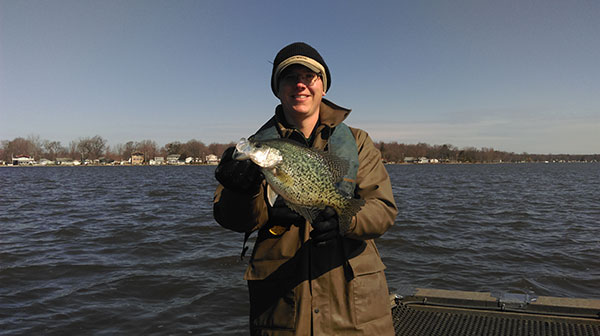 Biologists Offer Snapshot of Area Lake Populations
Biologists Offer Snapshot of Area Lake Populations
About the time most anglers were having dinner earlier this year, Indiana district fish biologists were launching their research boats and going to work.
Late spring and summertime lake surveys are a big part of the job for fish managers and Indiana DNR District Biologist Tom Bacula is no exception. He and his assistant have spent a lot of time on area lakes doing routine assessments of fish populations.
These surveys are done with either nets or a shock boat that idles near shorelines with electric probes dangling into the water. The generator-powered volts are just enough to stun fish and bring them to the surface. They are netted, counted, measured and a few scale samples are scraped from their sides before they are returned safely into the lake.
Bacula has surveyed several lakes this summer and his preliminary results show Fish Lake near Walkerton might be the best, especially for panfish.
- Details
(Provided by MDNR)
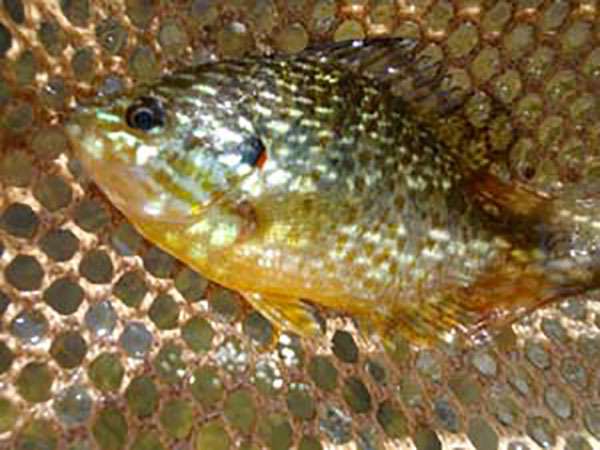 Randall Chain a Good Choice for Redear Sunfish
Randall Chain a Good Choice for Redear Sunfish
Looking for redear sunfish? You might try Randall Chain of Lakes.
There's no shortage of fishing access for those living in or visiting southwestern Michigan. Craig and Morrison lakes - part of the Randall Chain of Lakes in Branch County - can be included on the list with a group of seven interconnected lakes that cover nearly 1,100 acres.
Located near Coldwater (population of nearly 11,000), these lakes are just a quick trip for those traveling from Indiana or Ohio and there's plenty of panfish, bass, yellow perch and northern pike to target.
Craig and Morrison lakes are the two northern most lakes in the Randall Chain of Lakes. The Coldwater River flows into the southern end of the chain and exits out of Craig Lake.
Craig Lake specifically covers 122 acres and has a maximum depth of 25 feet. It has several islands and more than half of the lake is less than 10 feet deep. Morrison Lake is larger at 288 acres with an average depth of 21 feet and a maximum depth of 46 feet.





